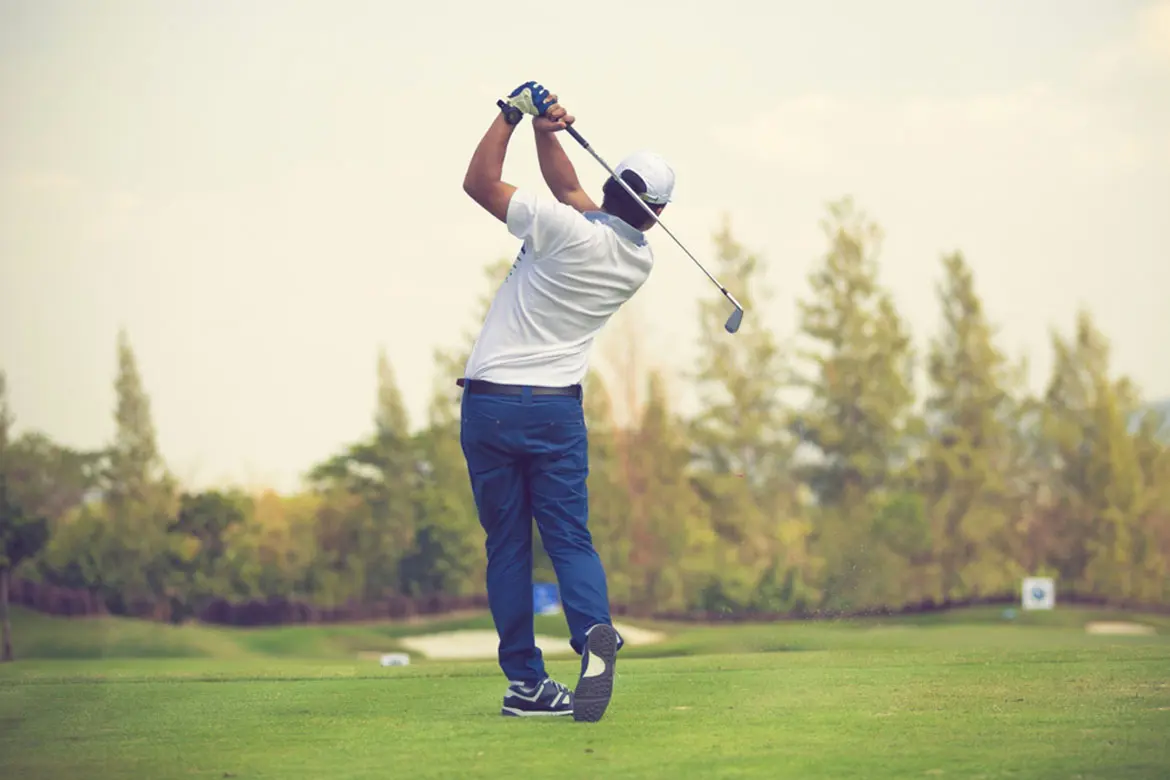Dr Soon Yee Hoong Michael
Orthopaedic Surgeon


Source: Shutterstock
Orthopaedic Surgeon
Golf injuries typically occur in the muscle-tendon units and the ligamentous support of the joints in the upper body. According to a Harvard study in 2004, back injuries would be the commonest at 36%, with elbow injuries at 32 percent, wrist and hand injuries at 21%, and shoulder and knee injuries at 11%.
The injuries usually occur due to a combination of factors. Generally, professional golfers tend to suffer from overuse injuries due to hours of practice while amateurs are more prone to injuries from lack of conditioning, poor swing mechanics and improper club grip.
Consider a middle-aged amateur who cannot run 2.4km in a consistently good time. Due to his work schedule, the only time he can work on his swing is to rush to the driving range in the mornings. On such trips, he starts driving the balls down the range seeking to increase his distance. Say the speed of the golf head exceeds 160 kilometres per hour in less than 0.2 second, imagine the amount of impact building up in his body and resulting in injuries.
The easiest way to understand how injuries occur is to analyse what happens during the swing phases. Most injuries occur during downswing and impact phases of the swing.
Clinically known as the medial epicondylitis, golfer's elbow is a form of tendonitis, where micro-tears in the tendon lead to inflammation and pain to this bony prominence part of the elbow. Muscles responsible for gripping the golf club start from the fingers and wrist and they converge onto the inside of the elbow. Strain is transferred to the inside right elbow area of a right-handed golfer during the downswing. At this point, the extended right wrist also contributes to the stress build-up to the flexor muscles. Both motions attribute to micro-trauma and the accumulation of stress at the elbow. This is worsened if the golfer is not using his legs, hips and trunk to generate force, but his right arm to drive the ball instead.
Tennis elbow, also called lateral epicondylitis, occurs when the tendon that are responsible for extension of the fingers and wrist are inflamed at the outside of the elbow. Tennis elbow arises in the outer left (or lead) elbow area in a right-handed golfer. Stress is at its climax during the downswing, when there is the most stretch in the tendons on the outside of the lead elbow. This is akin to using the lead elbow to 'pull' the club through, rather than generating force from the trunks. Gripping the club handle too tightly also aggravates this condition.
For the first line of treatment, the commonly advocated RICE always works. RICE is an acronym for Rest, Ice, Compression and Elevation and it targets at reducing the degree of acute inflammation, pain and swelling. Sometimes, an elbow splint may be recommended to prevent the elbow from moving about, and to prevent injury to the tendons around the elbow. Such measures also prepare the injured sportsman for the second phase of treatment.
Once the acute pain has been alleviated, the next phase of treatment aims at maintaining full range of motion of the elbow. Physiotherapy helps to maintain one's fitness through training strength, flexibility and endurance of the muscle and tendon groups. Correcting the swing mechanics at this point is also recommended upon one's return to golf.
With reduced inflammation, pain will also subside. Hence, anti-inflammatory medication is also useful in treating acute injury. In chronic cases, a cortisone injection can relieve the discomfort. However, persistent use can lead to weakening and gradual destruction of the very tendons that it is treating. Therefore, judicious use of cortisone by a physician is recommended.
When pain and discomfort persist, other treatments may need to be adopted. A counterforce brace worn below the elbow can help to provide support and ease the pain at the elbow.
A relatively new and innovative treatment known as Platelet-Rich-Plasma (PRP) has become popular in recent years, serving as another option for patients with tendon injuries. Also known as growth-factor injections, this technique harnesses one own body's potential for healing by concentrating and re-introducing the platelets and plasma into the area of injury. Platelets which are responsible for blood clotting also contain a large variety of growth factors that can influence soft tissue healing. One of the advantages of such techniques is the minimal risk of antigenic reaction since one's own blood is used to produce this PRP. This process can be carried out in the clinic setting, allowing patients to return to their normal activities without pain, within a reasonable period of time.
In some rare extreme cases of golf injuries, surgery may be required. This is usually performed via a small incision over the affected area. Although pain relief is usually very good for such treatment, it can take 3 – 6 months for complete recovery.